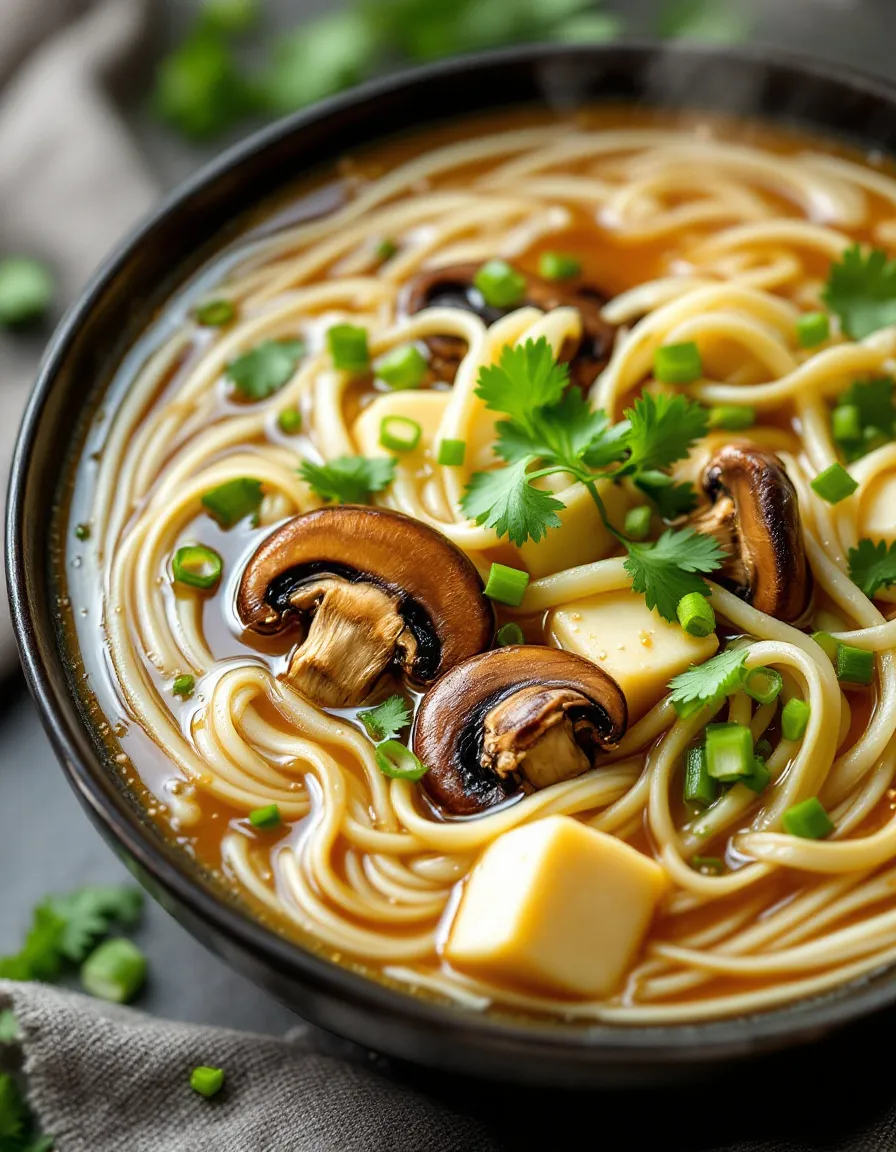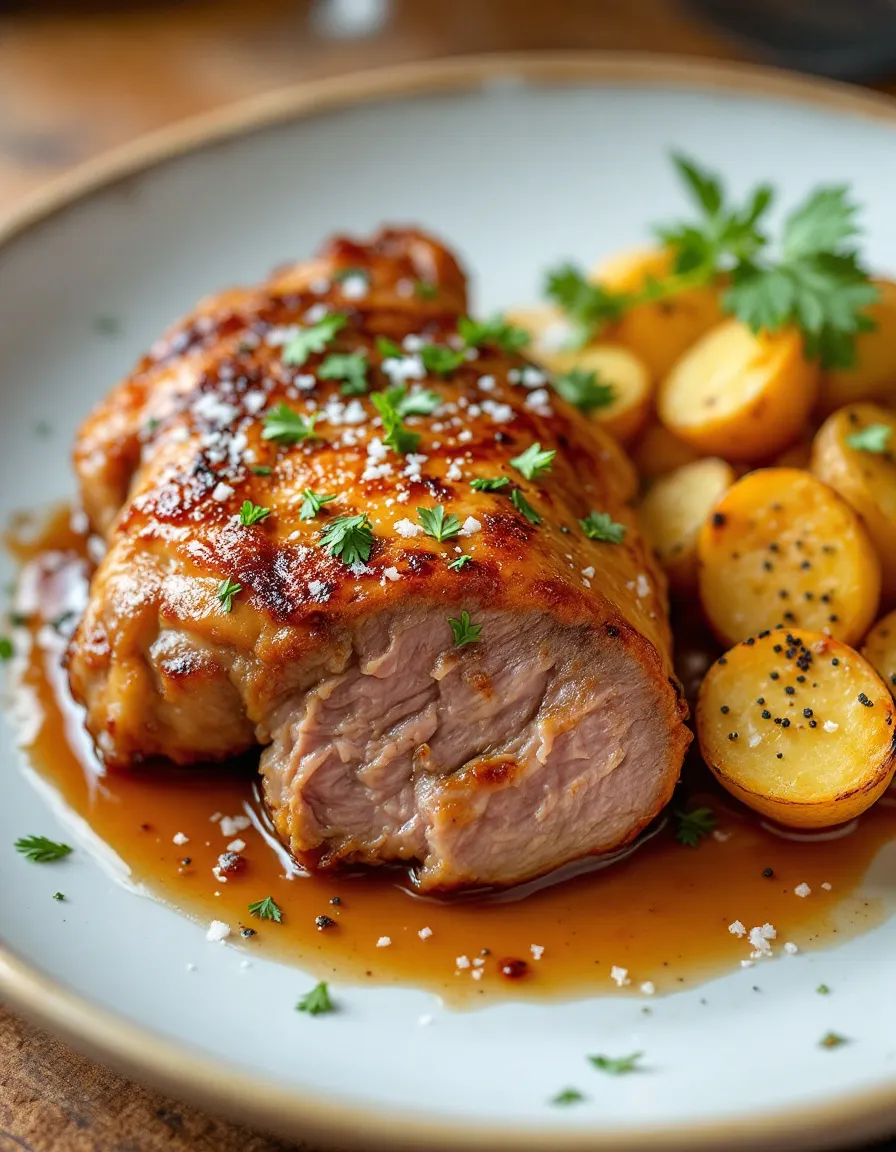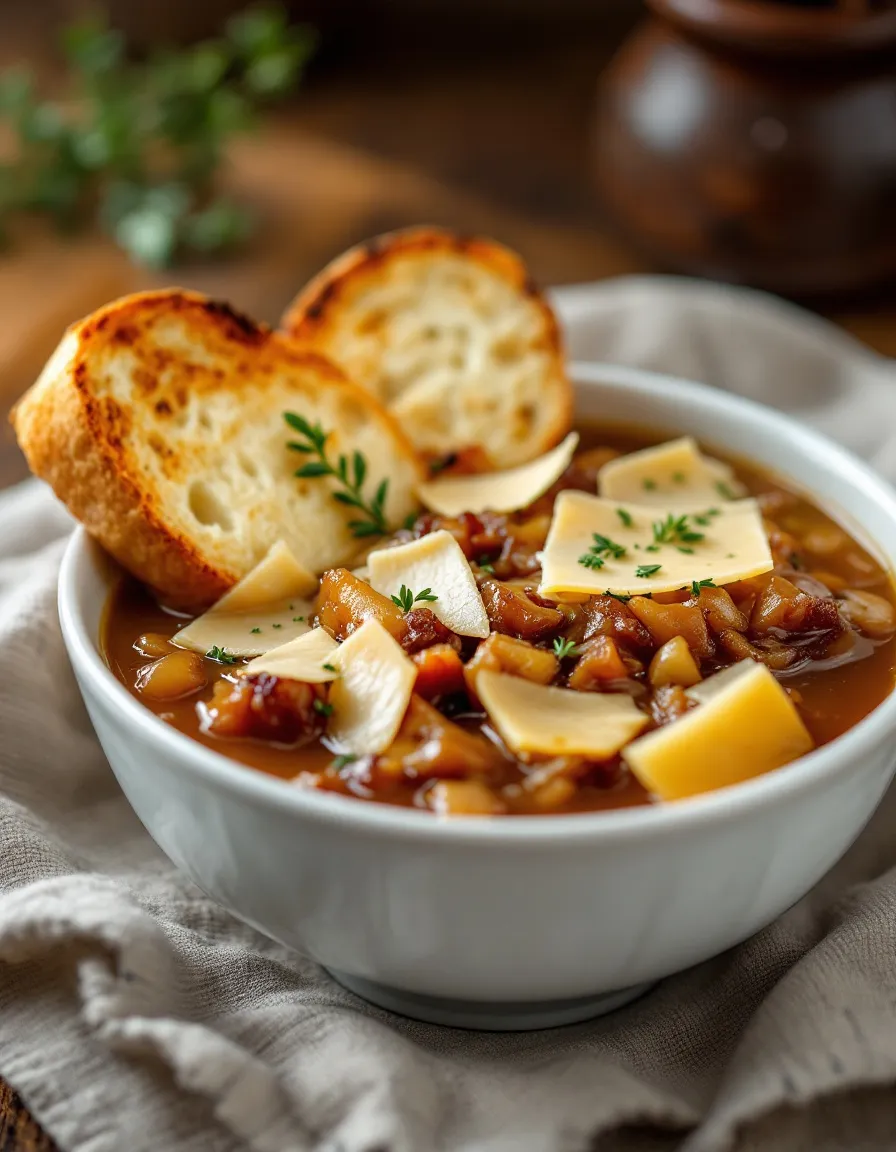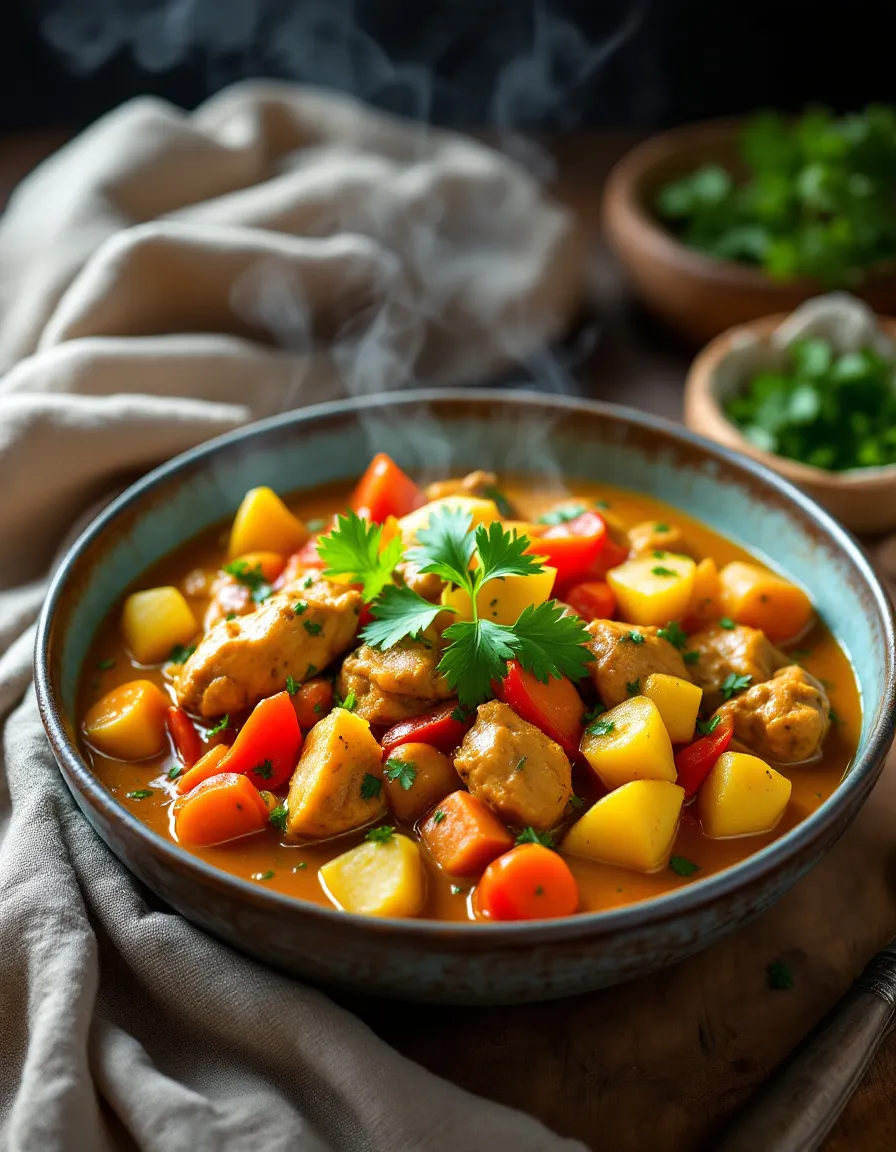Hot and Sour Soup: A Flavorful Asian Delight
Hot and Sour Soup is a popular dish known for its unique blend of flavors and comforting warmth. This delicious soup captures the essence of traditional Asian cooking, combining the heat of white pepper with the tanginess of vinegar. Each spoonful bursts with richness while offering a delightful contrast of textures, thanks to the silky mushrooms and crunchy bamboo shoots. Perfect for chilly evenings, this soup is both nourishing and satisfying, making it an essential addition to any meal.
As you prepare Hot and Sour Soup, the aroma of garlic, ginger, and soy sauce fills the kitchen, inviting everyone to gather around the table. The balance of heat and sourness is not just a flavor but an experience that evokes comfort and nostalgia. This soup doesn’t just fill your stomach; it warms your soul.
Quick Recipe Highlights
- Flavor Profile: This soup marries heat and acidity with earthy notes from mushrooms, resulting in a complex yet harmonious taste.
- Texture: The soup offers a delightful blend of silky broth, soft tofu, and the crunch of bamboo shoots, creating a satisfying mouthfeel.
- Aroma: The fragrant combination of garlic, ginger, and soy sauce enhances the soup’s warm and inviting aroma.
- Visual Appeal: The vibrant colors from scallions and red pepper flakes make this soup visually stunning.
- Skill Level Needed: While the recipe is accessible, it requires attention to timing to achieve the perfect flavor balance.
- Special Equipment: A sharp knife and a good-quality pot are essential to prepare this delightful dish efficiently.
Recipe Overview
- Difficulty Level: Medium—The recipe involves multiple cooking techniques, which could be a great learning opportunity for novice cooks.
- Category: Perfect as an appetizer or a light meal, it suits casual dinner parties or quick family dinners.
- Cuisine: Hot and Sour Soup originates from Chinese culinary traditions, reflecting the country’s rich history of balance in flavors.
- Cost: This recipe is budget-friendly, utilizing easily sourced ingredients that won’t break the bank.
- Season: Enjoy this soup year-round; however, it’s particularly comforting during cold months.
- Occasion: This dish is perfect for family gatherings, lunch dates, or as a starter for festive celebrations.
Why You’ll Love This Recipe
Hot and Sour Soup ticks all the boxes when it comes to taste and texture. The spicy, tangy broth is invigorating, awakening the senses and making each bite feel indulgent. The tender tofu and crunchy vegetables provide contrast, making it a deliciously comforting dish. Whether you’re feeling under the weather or just need something cozy, this soup is sure to please.
The convenience of preparing Hot and Sour Soup is another reason to love it. With a prep time of just 15 minutes, you can easily whip it up on busy weeknights, making it an accessible option for anyone struggling to find time for home-cooked meals. Plus, the ingredients are often pantry staples, so you can prepare this dish with little notice.
Nutritionally, this soup offers a balance of flavors and ingredients. The mushrooms contribute fiber and can benefit heart health, while bamboo shoots are low in calories yet high in nutrients. Tofu provides a plant-based source of protein and is suitable for different dietary preferences, making it a wholesome option for various eaters.
Hot and Sour Soup also holds social and entertaining value. Ideal for sharing, it easily serves multiple guests, allowing everyone to dig into a communal bowl. Preparing this dish can become a ritual in your household, creating memorable moments of laughter and togetherness.
Finally, consider the cost-effectiveness of this recipe. With inexpensive ingredients that can be bought in bulk, you’ll find that making Hot and Sour Soup can feed a crowd without stretching your budget too much. It’s a delicious way to keep both your appetites and wallets happy.
Historical Background and Cultural Significance
The origins of Hot and Sour Soup can be traced back to China’s Sichuan province, known for its bold flavors and prolific pepper usage. Traditionally, this dish was eaten for health benefits, believed to balance the body’s energies through the warmth of peppers and the sourness of vinegar. Its early forms were simple, relying on local ingredients, which have evolved into the flavorful concoction we enjoy today.
Culturally, Hot and Sour Soup holds a special place in Chinese cuisine. It symbolizes warmth and comfort, often served during family gatherings and festive occasions. It showcases the culinary philosophy of yin and yang, where the spicy and sour elements balance each other perfectly, embodying harmony within the meal.
The evolution of Hot and Sour Soup is fascinating, as it has seen numerous adaptations over the years. Each region in China has its own spin on the recipe, incorporating local ingredients and flavors. For example, in Northern China, the soup may lean towards a thicker consistency with more starch, while Southern variations are lighter and brisker.
Regional variations add depth to the significance of this dish, reflecting the culinary diversity within China. As it gains popularity globally, many chefs and home cooks outside of China have embraced its unique flavors, creating adaptations that suit local tastes while maintaining core elements of the original recipe.
Ingredient Deep Dive
– **Tofu**: A staple in Asian cuisine, tofu is praised for its high protein content and versatility. It serves as a canvas for flavors, readily absorbing the soup’s spices. When choosing tofu, look for firm blocks with a smooth texture, and store unused portions in water in the fridge. Tofu can be substituted with chicken or additional vegetables for a non-vegetarian twist.
– **Mushrooms**: Often used for their umami flavor, mushrooms not only elevate the taste but also enhance nutritional value. Whether using shiitake or button mushrooms, fresh ones with a firm texture are preferable. Store them in a paper bag in the fridge for longevity. Dried mushrooms can be rehydrated and used for a more intense flavor.
– **Bamboo Shoots**: This unique vegetable adds crunch and slight sweetness to the soup. Choose fresh bamboo shoots if available, as canned varieties may have added preservatives. Proper storage involves keeping them submerged in water if opened and refrigerated. They can be substituted with shredded carrots or sliced water chestnuts.
– **Soy Sauce and Vinegar**: These ingredients are essential in creating the soup’s defining flavor profile. Opt for high-quality soy sauce for the best taste. While any vinegar can work, Chinese black vinegar offers the most authentic flavor. Both soy sauce and vinegar need to be stored in a cool, dark place to maintain freshness.
– **Spices**: White pepper and garlic are critical for aromatics. They not only enhance the flavor but also contribute potential health benefits. When purchasing spices, opt for whole forms and grind them as needed for maximum freshness. Keep spices in airtight containers away from heat and light.
Common Mistakes to Avoid
- Overcooking the tofu can lead to a spongy texture; add it towards the end of the cooking process.
- Using too much vinegar can overpower the soup; start with less and adjust to taste.
- Neglecting to balance flavors will result in a flat dish; taste and adjust seasoning throughout cooking.
- Adding all ingredients at once can affect cooking times; layer them according to required cooking times.
- Using old spices can dull the soup’s flavor; always check the freshness of your spices before use.
- Not simmering the broth long enough won’t develop deep flavors; allow it to simmer for the recommended time.
- Skipping the garnishing step can make the dish less visually appealing; add chopped scallions for freshness.
- Storing leftovers improperly can lead to spoilage; use airtight containers in the fridge.
- Rushing the prep work can diminish the overall flavor; take your time to chop and measure ingredients accurately.
- Failing to use high-quality ingredients can impact the final dish; source fresh and authentic items when possible.
Essential Techniques
– **Proper Broth Preparation**: A well-made broth is the backbone of Hot and Sour Soup. Start by combining water, soy sauce, and spices in a pot. Simmer gently, allowing flavors to meld. Visual cue: Look for a slight cloudiness indicating flavor has developed.
– **Perfecting Tofu Texture**: Tofu should be added just before serving to prevent overcooking. For a firmer texture, press tofu to remove excess moisture. Visual cue: Properly cooked tofu should appear slightly golden and not soggy.
– **Balancing Flavors**: Taste is subjective—balance heat and sourness according to your preference. Adjust by adding vinegar for more tang or pepper for spice. Visual cue: A harmonious soup should have a well-rounded flavor without one element overpowering another.
Pro Tips for Perfect Hot and Sour Soup
– Use fresh ingredients for the best flavor—opt for seasonal vegetables when possible.
– Adjust the spice level according to personal preference; add chili oil for an extra kick.
– Prepare the soup in larger batches and freeze for quick weeknight meals.
– Experiment with different mushrooms to discover unique flavor profiles—try enoki or oyster mushrooms.
– Make sure to serve the soup hot to experience its full aromatic potential.
– Garnish generously with scallions and a sprinkle of white pepper for a fresh finish.
Variations and Adaptations
Regional variations of Hot and Sour Soup can introduce exciting twists. In some areas, seafood is added for a richer flavor, incorporating shrimp or crab. Seasonally, adding fresh vegetables like snow peas can enhance the texture and color of your soup. If dietary restrictions arise, consider substituting regular soy sauce with a gluten-free brand. Additionally, spice blends can be altered, using sriracha or chili garlic sauce for a different heat profile. If you prefer a creamier texture, blending some of the soup before serving can provide a comforting mouthfeel. Finally, exploring various garnishes such as cilantro or even fried shallots can elevate the experience.
Serving and Presentation Guide
To present Hot and Sour Soup appealingly, consider using bowls that showcase the vibrant colors of the dish. Serve family-style, allowing guests to help themselves or as individual portions topped with fresh herbs. Garnishing with scallions and a drizzle of sesame oil can enhance both flavor and visual interest. For an authentic experience, pair the soup with traditional Asian accompaniments like steamed dumplings or spring rolls. Temperature is essential; ensure the soup is piping hot upon serving for maximum enjoyment. Set a portion control approach by offering smaller bowls, allowing guests to enjoy multiple flavors throughout the meal.
Wine and Beverage Pairing
When pairing beverages with Hot and Sour Soup, a light white wine such as Sauvignon Blanc complements its flavors beautifully, providing a refreshing contrast. For non-alcoholic options, try a chilled jasmine tea; its floral notes enhance the aromatic aspects of the soup. A simple soda or sparkling water can also cleanse the palate between bites. If coffee or tea is preferred, a green tea with delicate flavors serves as an ideal choice. Regardless of the pairing, ensure drinks are served chilled or at room temperature to balance the warmth of the soup effectively.
Storage and Shelf Life
To maximize the shelf life of Hot and Sour Soup, store any leftovers in airtight containers in the refrigerator. This can keep the soup fresh for up to three days. When reheating, do so on the stove for an even temperature throughout; avoid microwaving as it can change the texture. If you need to store the soup for longer, consider freezing it in portion-sized containers for up to three months. Keep an eye out for signs of spoilage, such as off odors or changes in texture, which may indicate it’s time to discard the soup. Label your containers with dates for easy tracking.
Make Ahead Strategies
To ensure an easy night of meal preparation, utilizing make-ahead strategies can be a game changer. You can chop the vegetables and tofu the day before, keeping them stored in the fridge. Broth can also be pre-made and refrigerated, saving time on cooking day. When you’re ready to assemble, all that’s needed is to bring the broth to a simmer and add your prepared ingredients. If you plan to freeze portions, consider leaving out the tofu beforehand, as its texture can change once frozen. Reheat gently and add fresh ingredients directly before serving for the best quality.
Scaling Instructions
Scaling Hot and Sour Soup is easy: to halve the recipe, simply divide all ingredients by two, ensuring spices remain balanced. For larger gatherings, doubling or tripling the recipe can be done; however, you may need to adjust cooking times accordingly. When preparing larger quantities, opt for a bigger pot to accommodate all ingredients without overcrowding. Be mindful of storing in batches, as soup expands when frozen. Always taste during cooking, as the flavor concentration may vary when increasing quantities—adjust as necessary, ensuring a consistently delicious product.
Nutritional Deep Dive
Hot and Sour Soup provides a balanced macro breakdown, contributing healthy proteins from tofu while remaining low in calories. The inclusion of vegetables enhances micronutrient content, adding fiber, vitamins, and minerals. The freshness of ingredients aids digestion and boosts overall health, making it a wise addition to any meal. Ideal for weight management, the soup’s high fiber and protein content can help with satiety, ensuring you feel full without going overboard. Be cautious about sodium levels; use low-sodium soy sauce to create a healthier dish without compromising flavor.
Dietary Adaptations
Hot and Sour Soup can easily accommodate various dietary preferences. For gluten-free individuals, opt for gluten-free soy sauce as a substitute. A dairy-free version is naturally achievable since the core recipe is without dairy ingredients. Vegans can enjoy this dish by ensuring that all components, including sauces, are plant-based. Low-carb and keto diets benefit from increasing low-carb vegetables while reducing starches. Paleo enthusiasts can swap tofu for chicken or shrimp, and opting for a brothy base meets dietary requirements. Low-FODMAP variations can be adjusted by excluding garlic and using suitable vegetable substitutes.
Troubleshooting Guide
Texture issues often arise from overcooked tofu or vegetables, compromising the quality of the soup. Adjust cooking times carefully, adding softer ingredients last. If the flavor feels off, consider rebalancing with additional vinegar for sourness or pepper for heat. Temperature problems can be easily solved—simmer the soup until hot, ensuring no cold spots. Equipment challenges may arise from inadequate pots; a sturdy pot that distributes heat evenly is crucial. For common ingredient substitutions, consult versatile alternatives like vegetable broth for a lighter taste or miso for depth. Timing concerns should be closely monitored, as egg should not be added until the last moment.
Recipe Success Stories
Community engagement around Hot and Sour Soup has resulted in many success stories. Home cooks have shared their delightful improvisations, including unique ingredient substitutions that transformed the dish. Shared photographs have showcased personal touches, like vibrant garnishes and varying representations in family meals. Suggestions from readers have enriched base recipes, leading to an evolving conversation about flavor exploration. Through these interactions, the soup becomes not just a meal but a shared experience that brings people together, encouraging the sharing of culture and recipes in a modern context.
Frequently Asked Questions
Can I make Hot and Sour Soup vegetarian?
Absolutely! Hot and Sour Soup can be entirely vegetarian or vegan by using vegetable broth and omitting any meat. Tofu acts as a great protein source, making it fulfilling.
How spicy is Hot and Sour Soup?
The spice level can be adjusted to your preference. Traditional recipes use white pepper for heat, but you can add more or less depending on your taste. Start with less and gradually add for desired heat.
How do I store leftovers?
Store any leftovers in airtight containers in the fridge for up to three days. For longer storage, consider freezing portions for future meals. Always reheat gently on the stove for the best quality.
Is it possible to make Hot and Sour Soup ahead of time?
Yes, you can prepare the broth and chop the vegetables in advance. Store them separately in the fridge, and combine before serving for maximum freshness.
What are some good sides to serve with Hot and Sour Soup?
This soup pairs well with steamed dumplings, spring rolls, or a simple rice dish, making for a complete meal experience.
Can I use frozen vegetables?
While fresh vegetables are preferred for texture, frozen vegetables can work in a pinch. Add them towards the end of cooking to avoid overcooking.
Can I adjust the sourness?
Yes, the sourness can be tailored to the individual’s taste. Add rice vinegar gradually while tasting until you achieve your preferred tartness.
What type of mushrooms work best?
Shiitake mushrooms add substantial flavor, but you can mix in other types, such as button or oyster mushrooms, for a varied texture and taste.
How do I thicken Hot and Sour Soup?
To thicken the soup, mix a small amount of cornstarch with cold water and stir it into the boiling soup until it reaches the desired consistency.
Can I make Hot and Sour Soup gluten-free?
Yes, simply replace regular soy sauce with gluten-free soy sauce or tamari, and ensure other ingredients do not contain gluten.
Additional Resources
For those interested in expanding their culinary repertoire, consider exploring related recipes featuring traditional Asian fare. Techniques for perfecting homemade dumplings or stir-fries can enhance your overall cooking skills. Ingredient information can deepen your understanding of flavor profiles in Asian cuisine, while kitchen equipment recommendations can streamline your processes. Seasonal variations to consider include light summer options, steering towards fresh produce while still honoring the classic soup essence.
Join the Conversation
We invite you to share your experiences with Hot and Sour Soup on social media! Tag your photos with unique variations and garnishes, and engage with the community by sharing tips and insights. Your experiences will provide valuable perspective and inspire others to try this delightful recipe. Together, we can create a vibrant cooking community that celebrates culture, creativity, and the joy of food.
The Recipe
Hot and Sour Soup
Serves: 4
Prep Time: 15 mins
Cook Time: 20 mins
Total Time: 35 mins
Kitchen Equipment Needed
- Sharp knife
- Cutting board
- Large pot
- Measuring cups and spoons
- Wooden spoon for stirring
Ingredients
- 1 cup mushrooms, sliced
- 1 cup bamboo shoots, sliced
- 1 block firm tofu, cubed
- 4 cups vegetable or chicken broth
- 2 tablespoons soy sauce
- 3 tablespoons rice vinegar
- 1 teaspoon white pepper
- 2 cloves garlic, minced
- 1 teaspoon cornstarch mixed with 2 tablespoons water (for thickening)
- 2 scallions, chopped (for garnish)
Directions
- In a large pot, combine the broth, mushrooms, bamboo shoots, and garlic over medium heat. Bring to a gentle boil.
- Add the soy sauce, vinegar, and white pepper. Taste and adjust seasoning as necessary.
- Stir in the cubed tofu and allow to simmer for another 5 minutes.
- To thicken the soup, slowly stir in the cornstarch mixture until the desired consistency is achieved.
- Remove from heat and garnish with chopped scallions before serving.
Recipe Notes
- Feel free to add more vegetables like bell peppers or carrots for extra nutrition.
- Adjust spice levels kick by adding more white pepper or a pinch of chili flakes.
- Vegetarian and gluten-free options can be easily made with the right substitutions.










